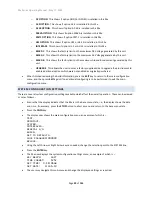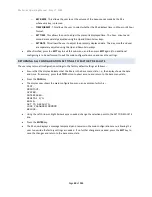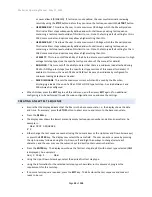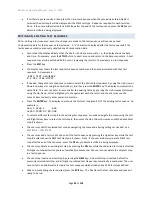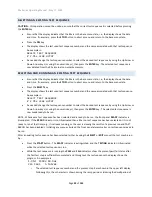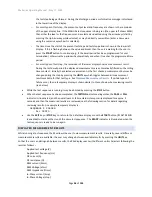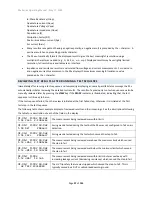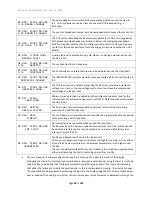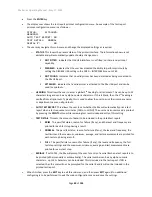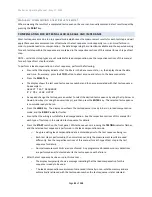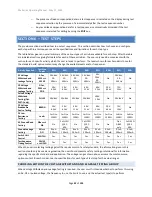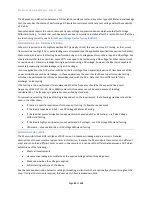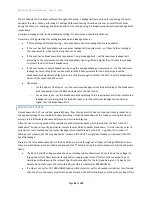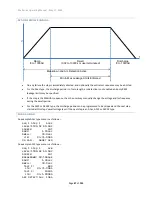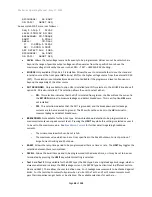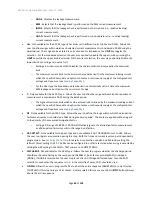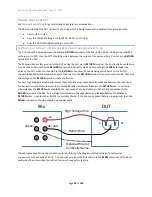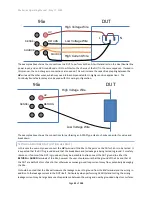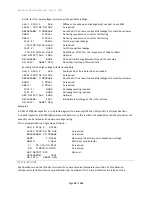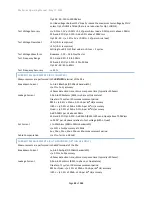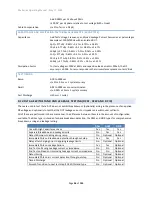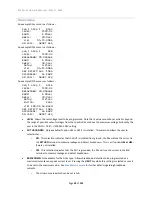
95x Series Operating Manual - May 17, 2022
Page
43
of
155
The 95x makes no distinction between a DC insulation resistance test and any other type of Withstand and Leakage
test; the user has the choice of performing a DC insulation resistance test at any test voltage within the capability
of the 95x.
Many standards require the user to remove any over-voltage suppression devices which would affect Voltage
Withstand testing. To check that such device(s) have been correctly re-installed after this test and to test that they
are functioning correctly, see
DC Breakdown Voltage Device Testing (BRKDN)
CHOOSING AC, DC, OR PULSE TESTING
When it is required to test a highly capacitive DUT (typically >0.1uF) the user must use DC testing, as the current
flow would be too high if AC or pulse testing were attempted (see the applicable Specifications section for details).
Some standards require that testing be performed using an AC voltage waveform, others require a DC voltage, but
others allow either to be used. Also, some DUTs may need to be tested using a DC voltage for other reasons (such
as non-linearity). Generally, leakage testing is performed using a DC voltage; however, the 95x is also capable of
accurately measuring resistive leakage using an AC voltage.
In some applications the DUT will not withstand the test voltage for an appreciable period of time because of the
power dissipation caused by its leakage. In these applications the user should choose to perform pulse testing
which can be performed in as little as a few milliseconds with
the 95x. Note that this is different to “
static
discharge”
pulse testing.
If AC testing is to be performed it is recommended that the frequency should be the expected line power
frequency of the DUT (i.e., 50, 60 or 400Hz) unless this frequency cannot be used because of loading
considerations. The frequency is generally not specified by standards.
To summarize, selecting the type of testing is dependent on the requirement; the following guidelines should be
used in the order shown -
•
If there is a specific requirement for the type of testing
–
follow the requirement.
•
If the load is capacitive >0.1uF
–
use DC Voltage Withstand Testing.
•
If the load has power dissipation requirements which preclude DC or AC testing
–
use Pulse Voltage
Withstand Testing.
•
If the load is highly non-linear so cannot withstand AC voltages - use DC Voltage Withstand Testing.
•
Otherwise
–
choose either AC or DC Voltage Withstand Testing.
CHOOSING THE LIMITS
The 95x monitors three different types of DUT current - breakdown, leakage, and arc current. Detailed
descriptions of these currents are given later in this section. Because the 95x monitors these currents in different
ways and can enforce different limits on each in the same test, it can be set to differentiate between a DUT which
exhibits any of the following
–
•
Meets all requirements
•
Has excessive leakage, but withstands the applied voltage without breaking down
•
Breaks down when the voltage is applied
•
Exhibits arcing with any of the above
See the detailed description below for setting or disabling arc limits which are optionally enforced throughout the
step. If only arc detection is required, the user must still set a breakdown limit.

